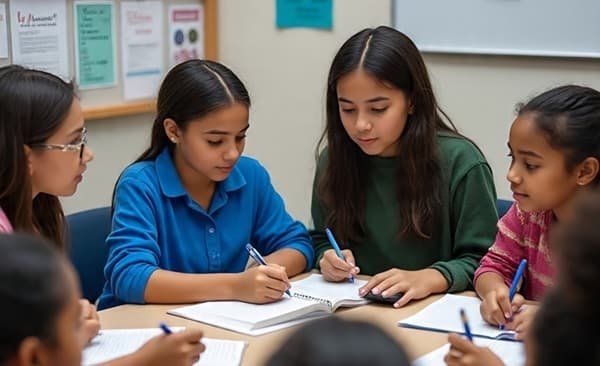In today’s modern India, where conversations around gender equality and career choices are gaining ground, one crucial subject remains missing from classrooms — financial literacy. From managing allowances to understanding savings, the basics of money management are still not taught in most Indian schools. And when it comes to young girls, this gap becomes even more concerning.
The foundation for an empowered life starts in school. Education plays a pivotal role in shaping mindsets and capabilities — especially for girls. That’s why the role of education in women empowerment cannot be underestimated. It not only helps girls dream beyond traditional roles but also equips them with the tools to achieve those dreams.

Yet, while we teach our children complex mathematical formulas and literary analysis, we skip essential life skills like managing a budget, understanding interest, or setting financial goals. As a result, many young girls grow up unprepared to make sound financial decisions. This makes early financial education for women all the more necessary — and it must start long before adulthood.
Why Financial Literacy for Girls Is Non-Negotiable
Financial education gives girls the confidence to take control of their future. It’s not just about earning or saving — it’s about making informed choices in every area of life. When girls learn financial independence early, they are more likely to:
- Make conscious career and education choices
- Delay marriage to pursue personal goals
- Start businesses or invest without fear
- Build emergency funds and retirement plans early
Sadly, the lack of exposure to money matters during formative years means many women rely on others to make financial decisions for them — even when they’re capable.
What’s Lacking in Indian Schools?
Despite advancements in the education system, financial literacy is rarely included in school curricula. Most students graduate knowing how to calculate compound interest but don’t know how it affects their savings account. While some private institutions have begun incorporating optional modules, this is still far from the norm.
Girls in particular face an uphill battle. Cultural norms and family expectations often discourage open conversations about money. As a result, many girls remain unaware of the power of financial freedom — until it’s too late.
Financial Illiteracy Has Real-World Consequences
When girls don’t learn money skills early, the consequences follow them into adulthood:
- Poor money habits: Overspending, minimal saving, and lack of budgeting
- Missed investment opportunities: Due to lack of confidence or misinformation
- Dependency: On family members or spouses for financial decisions
- Limited career choices: Fear of financial instability may lead to compromised goals
Teaching girls about money early can shift this narrative and build lifelong security.
What the World Is Doing Right
Countries like Australia, the UK, and the U.S. have integrated financial education into school programs, teaching students practical money management through:
- Budget simulations
- Real-life financial case studies
- Banking basics
- Understanding credit, debt, and investments
These countries recognize that financial education builds more responsible, self-reliant citizens — a lesson India would benefit from adopting widely.
Steps Indian Schools Can Take
Financial literacy doesn’t need to be a standalone subject to be effective. Here’s how schools can integrate it naturally:
- Incorporate real-life math problems involving budgeting, savings, or interest rates.
- Introduce interactive learning: Use games, quizzes, and apps to teach money skills.
- Invite guest speakers — especially women leaders or entrepreneurs — to share stories about managing finances.
- Include practical sessions like mock shopping, saving goals, or investment simulations.
- Encourage journaling of pocket money usage or financial goals to instill accountability.
These efforts, even at a small scale, can make a significant difference over time.
Parents and Communities Have a Role Too
It’s not just schools. Parents and communities must normalize financial conversations at home:
- Involve girls in budgeting decisions for groceries or school supplies.
- Teach them the value of saving through piggy banks or bank accounts.
- Encourage financial responsibility over pocket money and spending.
Workshops led by NGOs or local leaders can also provide additional support, especially in underserved areas.
Financial Literacy = Real Empowerment
If we want to build a generation of independent, self-sufficient women, we must start young. Financial literacy isn’t optional anymore — it’s a survival skill. And it needs to be gender-inclusive.
Girls should graduate not only with degrees, but also with the confidence to manage, grow, and protect their wealth. Only then can we say we’ve truly empowered them.
Final Thoughts
Financial literacy is the missing subject that has the power to transform lives. It’s not about making girls money-minded — it’s about giving them the freedom to make informed choices. It’s about ensuring they never feel lost, dependent, or stuck when it comes to their finances.
Let’s not wait for adulthood to introduce girls to money. Let’s make it part of their upbringing, their education, and their everyday experiences.
Only then will we see a future where women don’t just earn — they lead, invest, and thrive.
Anantha Nageswaran is the chief editor and writer at TheBusinessBlaze.com. He specialises in business, finance, insurance, loan investment topics. With a strong background in business-finance and a passion for demystifying complex concepts, Anantha brings a unique perspective to his writing.


